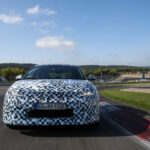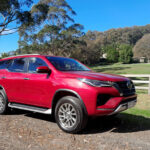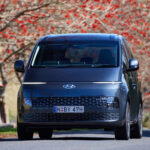The Volkswagen Group emissions cheating scandal has again brought up the argument that emissions and fuel consumption testing should be done in the real world, not in laboratories.
Which sounds good in principle and I can understand why the general public is calling out for it. However, there are far too many variables in the real world so comparisons between vehicles require identical testing, which can only be done inside a building where temperature and weather are under control and cars are driven in an extremely accurate manner to follow preset driving graphs.
Let’s look at the real-world on-road testing variables. A major variable is the driver, I worked in the technical research department of the NRMA during the 1970s and ‘80s. That was during the period of fuel crises that caused severe shortage of fuel resulting in drivers having to queue for hours for rationed petrol. That was followed by rapidly increasing prices.
Fuel saving gadgets were coming out of the woodwork from all directions and the NRMA engineers did their best to set up real-world tests. These were done at the now defunct Hardie Ferodo proving ground to Sydney’s west, as well as on set courses on real roads that included suburbs, shopping strips, country roads and motorways.
We also did fuel consumption testing as part of our routine road test comparison tests. Cars were driven in convoy and we had set changeover points so that drivers moved from car to car. Even though we appeared to be driving the cars in exactly the same manner there were typically three to seven per cent differences in consumption from driver to driver.
Extrapolating that to the year 2015 could see one car losing sales due to on-road real-world testing being done by the least economical driver.
Lead foot drivers use a lot more fuel than moderate ones. Those running late often drive harder to try and make up time. People in a bad temper, for whatever reason not necessarily driving conditions, often take it out on the car.
Then there’s the weather – headwinds and tailwinds obviously affect the fuel consumption. Not so obvious is that crosswinds also increase fuel use. That’s because the car crabs slightly sideways as the driver steers to keep in a straight line. Wet weather also chews up fuel as the tyres push water out of the way. The body pushes its way through the wet atmosphere.
Windscreen wipers use electricity, and that comes from the alternator driven by the car’s engine.
Hot weather puts an extra load on the air conditioners.
Traffic, the bane of all our lives, is unpredictable. Going to extremes, real-world testing one day could result in double the fuel consumption the next day … or half.
Many drivers complain their consumption is higher than the numbers on the sticker. Keep in mind the big number on the sticker is for combined fuel consumption over set laboratory courses that are generally 40 per cent city and 60 per cent country driving. You have to make allowance for the areas in which you drive. Even more so if they involve hilly and winding roads.
By all means we should have some form of real-world testing carried out as part of the official numbers allocated to cars in our emission and consumption guides.
However, the on-road tests must carefully controlled and corrections made for the sort of things we’ve listed above – frankly a task that verges on the impossible.
The real-world numbers must be allied with laboratory numbers (very carefully policed to avoid a repeat of VWs cheating).
By the way, I’ve been an associate member of the Society of Automotive Engineers Australasia for many years, and also subscribe to automotive engineering journals and reports from other global sources. There have been rumours and speculation on cheating emission tests for several years, though no specific companies were mentioned.
So there wasn’t as much surprise from engineers as you might have expected when the Volkswagen scandal broke…












